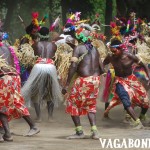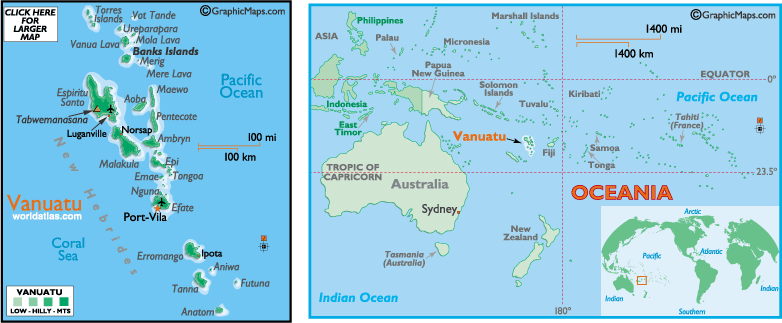Sam and The Banyan Tree in Vanuatu
From the bushes he comes out of no where. This seems completely normal here. I can be walking along what appears to be the most desolate area of beach or walking in the forest with thick walls of seemingly inpenertratable vegetation all around me, and then all of a sudden the shining smile of teeth appear with a warm ‘Hello!’ and I am greeted by a local Vanuatuan. Such was the case when my husband and I were walking to see what is claimed to be The World’s Biggest Banyan Tree.
Vanuatu is a country where people live under thatched roofs, sleep on the floor and kill the meat they are going to eat the same day. I was shown many lessons from Vanuatuans and one such person that left a lasting impression on me was Sam.

Sam came out of no where to show us the way to The World’s Biggest Banyan Tree. I think he might have actually been sleeping in a field full of tall grass. He asked if we would mind walking very slowly as he had been out riding a horse, (bareback- I didn’t see one saddle the entire time I was there), and he fell off. Now his back was very sore.
With unrushed steps we strolled up the slope of the land. Each person we passed greeted us as we walked through their tidy village with a large thatched structure serving as a school and small thatched huts next to banana and papaya trees.
Reaching the top of a green ridge layered with agriculture we looked down into the gully of the tree that had a circumfrance of three football fields. Sam gestures with his hands indicating that all the green we see below us is from the same tree.

We walked down the side of a steep hill with chunks of soil chopped out functioning as stairs. We meandered behind Sam as he lead us amongst wall-like corridors created by thousands of tree branches growing into the ground like the straight, wooden legs of toy soldiers. The straightness of these branches deem them to be harvested for building huts and fences. The World’s Biggest Banyan Tree however is no longer cut and is saved just for the tourist.
We reach a point where Sam informs us we can participate in an activity if we want to.
“Whatever you do, don’t let go.”
“Ok,” I say.
“You ready? Just don’t let go.”
“Ok, I’m ready.”
“Are you sure you can do this? Don’t let go.”
About eight more questions and answers like this were spoken back and forth between us as I prepared to fulfil a childhood dream and swing out on a vine high above the land like George of the Jungle. As the momentum took me out towards the canopy I appreciated the annixous and wise advice Sam was trying to instil in me as I was a good twenty feet above ground. This was indeed not a place to let go.

“Has anyone ever let go?” I ask Sam once I swung back to the ground.
“No.”
As we strolled back along the grassy path, conversation of all sorts of various topics was flowing. And it flowed to the topic of homelessness. Sam could not understand the concept of how it is possible for anyone in America to be homeless. He’s seen the movies and magazines. He’s seen the glimmer, gold and comforts of the American nation.
“But how can someone be homeless when your country has so much wealth?” he asks.
“Well, through a series of events both in and out of people’s control and life choices, sometimes they end up homeless,” I say.
“But if you saw someone on the street who was hungry and needed help, why wouldn’t the village take care of him?”
This question caused my internal dialogue to go into hyper-drive. I have debated this question so many times with different groups of people. Why do we have homeless people in our society and how is this gap created? Is it the fear and conditioning from a young age that the majority of us are taught never to talk to strangers? Do we automatically look at a homeless person and cast a stereotype on them that they must have a mental disorder or are a drunk? I slowed my brain to try and give an explanation of how these issues can exist in America.
“Well, there’s a lot of different reasons. Some people have mental disorders. Some people may have gotten into drugs. Some people really struggle with their finances. Some people run away from home. We have such a large population it’s hard to ensure people don’t fall through the cracks,” I try to explain.
“But where are their families?”
“Some people don’t have any idea where their families are.”
Sam completely stops walking at this statement. With green hills shooting up behind him and rays of sun beaming down on his face, he squints, staring at us with mouth open and head tilted to the side.
After a long pause he asks, “But how can you not have a family? Family is everything here. We all grow together. We take care of each other. We have nothing without family.”
The hard creasing lines on Sam’s face tells me that he is trying hard to think how a world without family could exist. He continues, “We don’t have hungry people here (this was his opinion and hopefully that is indeed true in his village). We may not have all the different kinds of food you have, but here everyone has a garden so everyone has food. If I grow a lot of cabbages and my neighbour grows a lot of eggplant we just exchange. There is always food in season so we always eat. If someone is walking through our village to another, and they are hungry, they can just eat the food they need. That is the custom here. The chief makes sure everyone is doing their jobs and that everyone has food. Where are your chiefs? What are they doing?”
The question hangs in the air. We walk on a few more steps each of us looking down lost in our own thoughts of how the world works. Sam stops again.
“So where do they sleep?” as he struggles imagine how anyone could be homeless.
“Anywhere really. Under bridges, on the street, some people make shelters out of shopping carts or cardboard boxes.”
We do our best to explain how there are hundreds and hundreds of organizations that give food out to those in need. We talked about how many people donate their time or money to help out their communities. We tried to put in perspective the number of people that do good deeds and contribute to their communities outweigh the number of people doing bad things. Sam was very glad to hear about all of the people doing good deeds to help each other and was very sorry for anyone that didn’t have a family or a home.
As we neared the spot Sam initially appeared it was now time for him to disappear. Firmly gripping hands we said our warm good byes. With his soft brown eyes, Sam holds our hands a little longer and left us with these final words, “You know, in the end we’re all people who will either go to heaven or not. It does not matter. We have to take care of each other.”
Sam is right. Not just because it’s the holiday season and not just because of the recent tragedy of our nation, but because we are all people sharing this space on earth- let us be kind to one another. We all have the same needs of food, water, shelter and love. If you see someone who is needing the love, give them the love. No matter which part of this planet we live on, we owe it to each other to be the example by which to live by.

*There seems to be some debate as to who has the world’s largest banyan tree. Kolkata in India is also claiming to have the world’s largest banyan tree. When we go to Kolkata we will let you know which one we think is bigger.*




 Previous Post
Previous Post Next Post
Next Post
This Banyan looks like it could fill a Canyon! Hard to imagine a larger one!
Indeed- it was huge!
It’s amazing all the endless possibilities that America has to offer. There are so many different choices and so many wonderful options and freedoms that we have. At the same time, it is unbelievable how much we, as a nation, fail to acknowledge some basic concepts and morals to watch out for those around us.
Thanks for sharing these thoughts.
Such a cool story! Loved it. You have a way with words 😉
Nic
Thanks Nic! Glad you got something out of the story.